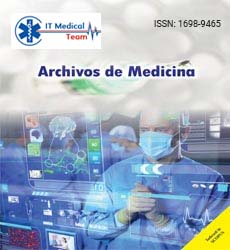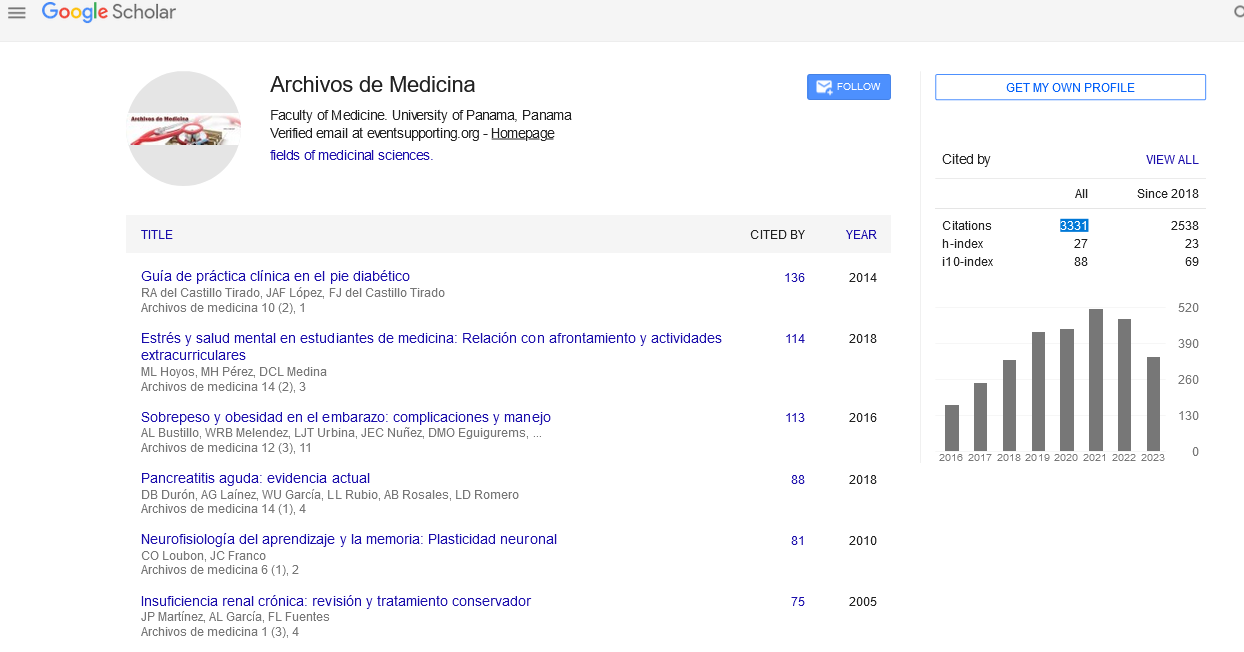Rapid Communication - (2023) Volume 19, Issue 4
Advances in Diagnosis and Treatment of Cardiovascular Disease: A Review of the Latest Research and Clinical Practice
Joshua Tison*
Department of Medicine, University of California, San Francisco, USA
*Correspondence:
Joshua Tison, Department of Medicine, University of California, San Francisco,
USA,
Email:
Received: 12-Oct-2023
Editor assigned: 16-Oct-2023
Reviewed: 31-Oct-2023
Revised: 03-Nov-2023, Manuscript No. IPADM-23-13700 (R);
Published:
09-Nov-2023, DOI: 10.36648/1698-9465-19-1598
Introduction
Cardiovascular Disease (CVD) refers to a variety of conditions that affect the heart and blood vessels. It is one of the main causes of morbidity and mortality worldwide. According to the World Health Organization (WHO), an estimated 17.9 million people die of CVD each year, representing 31% of all deaths worldwide. This article aims to provide an overview of CVD, including its risk factors, diagnosis, and treatment options [1].
Non-modifiable risk factors include age, gender, and family history. As we age, the risk of CVD increases. Men are at higher CVD risk than women, especially before menopause. A family history of CVD, such as a parent or sibling with a history of heart disease or stroke, can also increase the risk of developing the disease. Modifiable risk factors for CVD include hypertension, diabetes, high cholesterol, smoking, and obesity. Hypertension, or high blood pressure, puts extra strain on the heart and blood vessels, causing damage over time. Diabetes, particularly type 2 diabetes, is associated with insulin resistance and high blood sugar levels, which can damage blood vessels and increase the risk of heart disease. High cholesterol levels, particularly high levels of LDL or "bad" cholesterol, can lead to plaque buildup in the arteries, which reduces blood flow and increases the risk of heart attack and stroke. Smoking is a major risk factor for cardiovascular disease, as it damages blood vessels and contributes to plaque buildup. Obesity, particularly abdominal obesity, is also associated with increased CVD risk, as it can lead to insulin resistance, high blood pressure, and high cholesterol levels [2].
Other modifiable risk factors for CVD include physical inactivity, poor diet, and stress. Regular physical activity is essential for maintaining a healthy weight, lowering blood pressure, and improving overall cardiovascular health. A diet rich in saturated and trans fats, salt, and sugar is associated with increased CVD risk, while a diet rich in fruits, vegetables, whole grains, and lean protein may help reduce risk. Stress, particularly chronic stress, can also contribute to the development of CVD, as it can increase blood pressure and inflammation in the body. Identifying and controlling these risk factors is essential to prevent and control CVD. This can include lifestyle modifications such as quitting smoking, eating a healthy diet, increasing physical activity, and managing stress. Medications, such as statins, antiplatelet agents, and blood pressure lowering medications, may also be prescribed to help control risk factors and prevent the development of CVD [3].
Description
The diagnosis of Cardiovascular Disease (CVD) involves a
comprehensive evaluation of the patient's medical history,
physical examination, and diagnostic tests. The diagnostic
process aims to identify any abnormalities or damage to the
heart or blood vessels that may indicate the presence of CVD.
The medical history is an important part of the diagnostic
process, providing information about the patient’s symptoms,
risk factors, and family history of heart disease. The health care
provider will ask about any symptoms the patient is
experiencing, such as chest pain, shortness of breath, or fatigue.
They will also inquire about any risk factors the patient may
have, such as high blood pressure, diabetes, high cholesterol,
smoking, or obesity. A family history of heart disease is also
important, as it can increase the risk of developing
cardiovascular disease. The physical examination involves a
thorough evaluation of the patient's cardiovascular system. The
health care provider will listen to the patient's heart sounds and
check their pulse for abnormalities. They will also measure the
patient's blood pressure, which can provide important
information about the health of their cardiovascular system.
Diagnostic tests are also used to help diagnose CVD. These
may include:
Electrocardiogram (ECG): This test measures the electrical
activity of the heart and can detect heart rhythm abnormalities
or damage to the heart muscle.
Echocardiogram: This test uses ultrasound to create images of
the heart and can detect abnormalities in the structure or
function of the heart.
Stress test: This test involves exercising on a treadmill or
stationary bike while the health care provider monitors the
patient’s heart rate and blood pressure. It can help detect any
abnormalities in heart function during exercise.
Coronary angiography: This test involves injecting a dye into
the coronary arteries and taking X-ray images to visualize any blockages or narrowing in the arteries that supply blood to the
heart. Other tests, such as blood tests to measure cholesterol
levels or markers of inflammation, may also be used to help
diagnose CVD. The CVD diagnostic process is essential to identify
the presence of the disease and determine the appropriate
treatment plan. Early detection and treatment can help prevent
complications and improve outcomes for patients with CVD [4].
CVD treatment varies depending on the type and severity of
the condition. Lifestyle changes, such as quitting smoking, eating
a healthy diet and increasing physical activity, are often
recommended as first line treatment. Medications, such as
statins, antiplatelet agents, and beta blockers, may be
prescribed to control blood pressure, cholesterol levels, and
other risk factors. In more serious cases, procedures such as
angioplasty, stenting, and coronary artery bypass surgery may be
necessary.
CVD prevention is essential to reduce the burden of disease.
This includes identifying and managing risk factors, such as high
blood pressure, diabetes and high cholesterol. Lifestyle
modifications, such as regular exercise, healthy eating, and
avoiding smoking, can also reduce CVD risk. CVD screening may
be recommended for people with a family history of the disease
or those with multiple risk factors [5].
Conclusion
CVDs are one of the leading causes of morbidity and mortality
worldwide. CVD risk factors include both modifiable and non-modifiable
factors. The diagnosis of CVD usually involves a
combination of medical history, physical examination, and
diagnostic tests. CVD treatment varies depending on the type
and severity of the condition. CVD prevention is essential to
reduce the burden of disease. This includes identification and
control of risk factors, lifestyle modifications, and screening for
disease in high risk individuals.
References
- Maroo BP, Lavie CJ, Milani RV (2008) Secondary prevention of coronary heart disease in elderly patients following myocardial infarction: Are all HMG-CoA reductase inhibitors alike? Drugs Aging 25:649-664
- Ahmed K, Tunaru S, Offermanns S (2009) GPR109A, GPR109B and GPR81, a family of hydroxy-carboxylic acid receptors. Trends Pharmacol Sci 30:557-562
- Arbabi E, Hamidi G, Talaei SA, Salami M (2016) Estrogen agonist genistein differentially influences the cognitive and motor disorders in an ovariectomized animal model of Parkinsonism. Iran J Basic Med Sci 19(12):1285
- Bakken JS, Polgreen PM, Beekmann SE, Riedo FX, Streit JA (2013) Treatment approaches including fecal microbiota transplantation for Recurrent Clostridium Difficile Infection (RCDI) among infectious disease physicians. Anaerobe 24:20-24
- Bhattarai Y, Kashyap PC (2016) Germ free mice model for studying host microbial interactions. GEMMs 123-135





